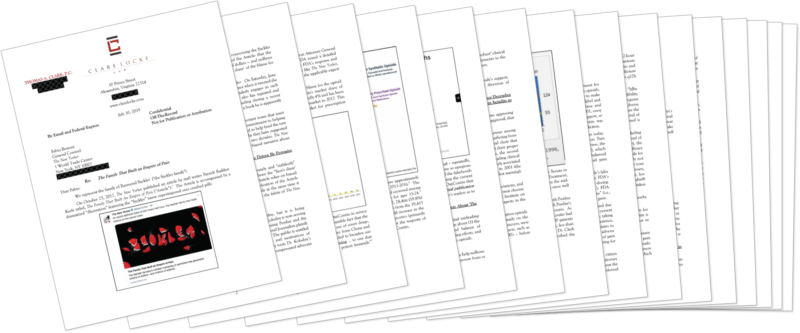New Yorker False Claims
The New Yorker has consistently refused to correct factual errors in its reporting about the Sackler family, Purdue Pharma and the opioid crisis.
2021 Letter to The New Yorker Includes Detailed, Fully Sourced Recitation of Errors & Misleading Statements[1]

Some Examples of False Claims in The New Yorker Articles
False Claim
“The Sackler dynasty’s ruthless marketing of painkillers has generated billions of dollars—and millions of addicts.” — The New Yorker, 2017[2]
Fact
OxyContin prescriptions have never amounted to more than 4% of the market for prescription opioids and there is no factual basis for the false assertion that the medicine addicted millions. When presented with these same facts, other publications have corrected this error.
False Claim
“But Purdue, facing a shrinking market and rising opprobrium, has not given up the search for new users. In August, 2015, over objections from critics, the company received F.D.A. approval to market OxyContin to children as young as eleven.” — The New Yorker, 2017[2]
Fact
This statement is demonstrably false[3]. Purdue never sought or obtained permission to market OxyContin to children. The Pediatric Research Equity Act requires pharmaceutical companies to conduct pediatric studies. In fact, the FDA rejected Purdue’s request not to conduct these studies (they had nothing to do with marketing).
False Claim
“But OxyContin’s success also sparked a deadly crisis of addiction.” — The New Yorker, 2020[4]
Fact
False Claim
“Many people who were addicted but couldn’t afford or access prescription drugs transitioned to heroin and black-market fentanyl.” — The New Yorker, 2020[4]
Fact
A 2020 FDA review team found there was “not clear evidence that OxyContin’s reformulation caused heroin-naïve individuals to initiate use.”[6] Additionally, the National Survey on Drug Use and Abuse found less than 4% of people who abused prescription opioids started using heroin within five years.[7]